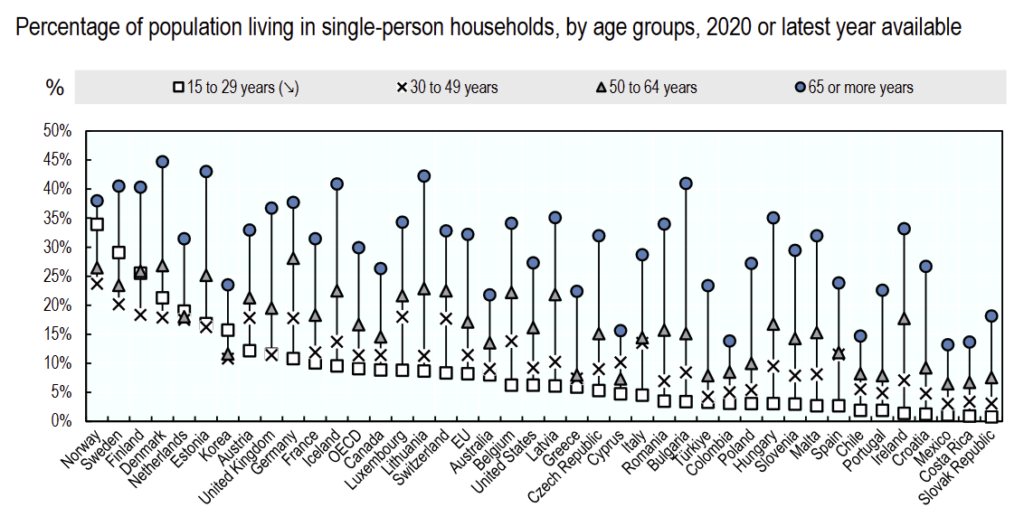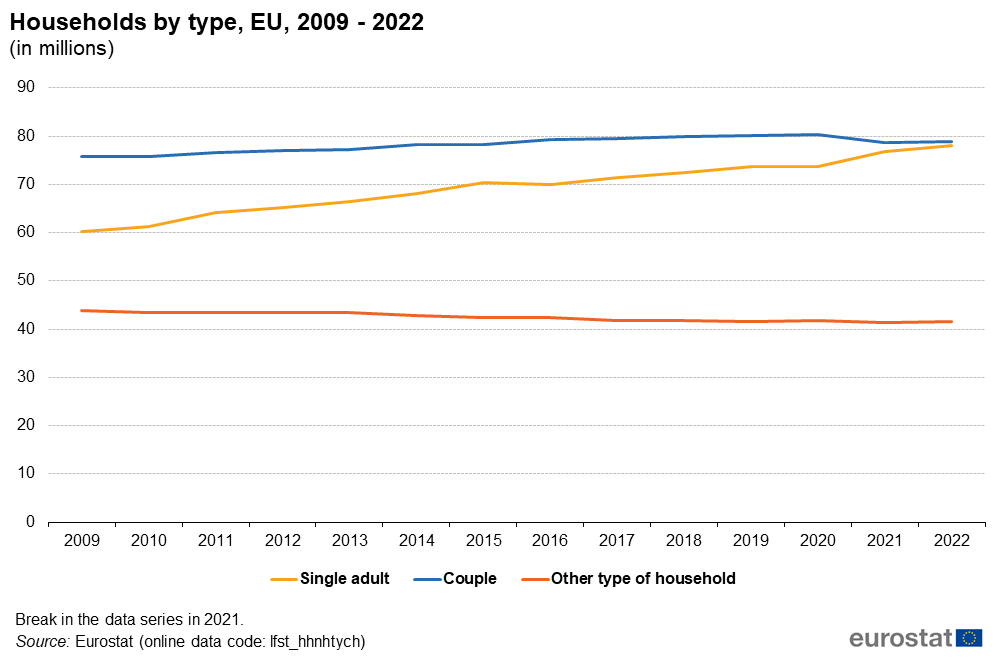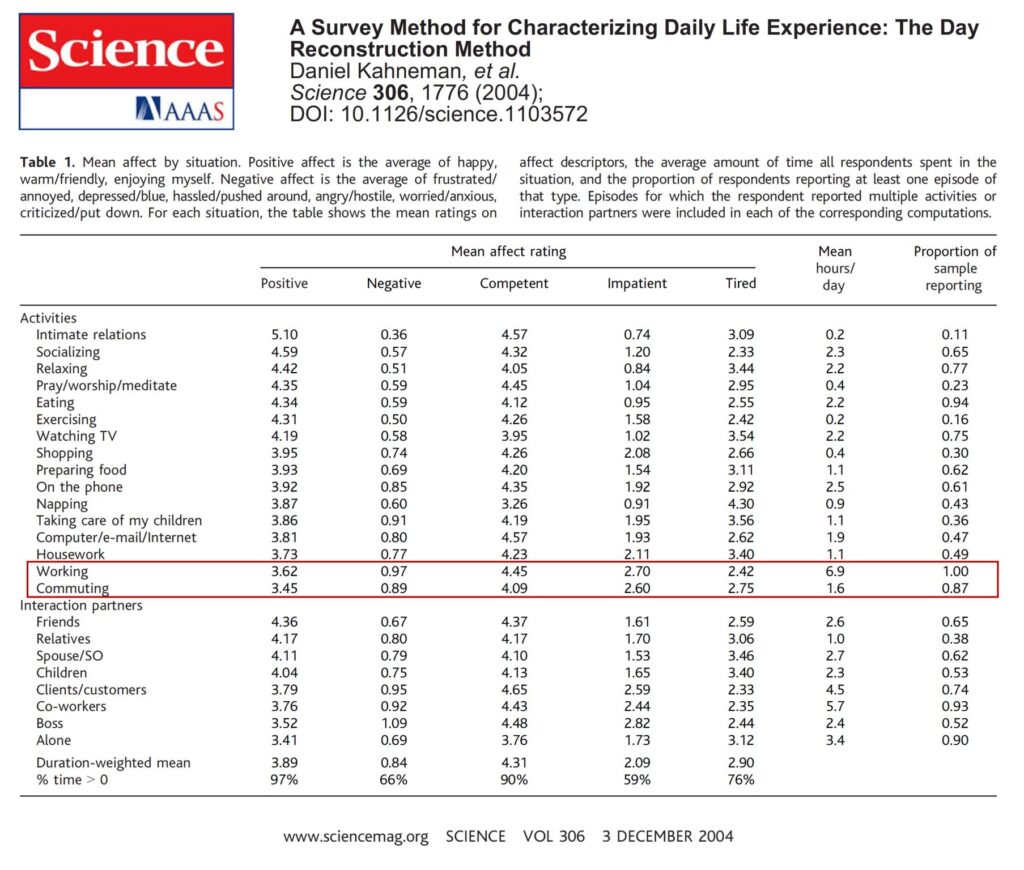[but also, no more crowdedness]
When we present the Coremoting idea to potential users, we get a wide variety of responses. Most are positive, some are neutral and, understandably, we have a few, just a few, negative reactions.
In the positive reactions, sometimes we have the Wow! effect, expressed either as “why nobody thought about this before?” or as “I wish there was something similar in my organisation”. Digging into the demographics of our fan-base, we realised that there is a large group of individuals who live alone; or whose households only have one adult member (e.g. single parents).
Single-person households in OECD
According to an extensive OECD study, the percentage of population living in single-person householsds or single adult households is already quite significant in the “Western World” and is gradually increasing. In the chart below, we can see that in many countries, a quarter of the working age population is living alone.

However, this chart only shows part of the picture.
Single-adult households in the EU
A study by the European Commission and Eurostat (see chart below) indicated that, in the EU, the amount of Single Adult households keeps growing steadily since 2009. And that, even though the number of Couple and Other type of households remains steady or is decreasing.

The implication of these two charts is quite significant when it comes to working-from home. It means that a large part of the population spends entire days and nights completely alone or without the physical presence of another adult. It is an extraordinary situation and unique in human history. What makes it particularly worrisome is that many adults, particularly Gen Z adults, entered the workforce during the pandemic and #WFH is the only way of working they know. So, for them, work is associated with loneliness, isolation and lack of socialization, whereas, for other generations, it is the absolute opposite!
Commuting is the worse of evils
Still, commuting is perceived as the most negatively perceived activity, faring worse even compared to working, according to a classic study by Kahneman et al. from 2004.

It is therefore no surprise that many employees will not trade one “evil” for another. They prefer to stay alone at home, instead of commuting to an office that might improve their social “score” but overall lower their “wellbeing” score.
Indeed, of all our potential users who question the value of Coremoting, the most pronounced group is the one with an “active” social housing situation. Why add “more”
people in a house that is already crowded (with flatmates, children, spouse etc.)? And obviously, thinking of Coremoting “just” from a host perspective means considering only one side of the coin. Coremoting is designed for hosting and “guesting”. That is, if you live in a crowded home and need some quiet, comfortable, cozy, space to work, then maybe you are looking for a host!
Coremoting is offering two new working modes: a “host” mode and a “guest” mode. And our matching engine is made to solve two “feeling” problems at once: Loneliness of the host and crowdedness of the guest. Undestandably, there are numerous intermediate situations where one might simply want a change of scene, a break in the routine, an alternative setting (“cambio de aires” is called in Spanish).
Want to try it? Actually 60% of respondents to our survey indicated that they indeed WOULD like to try it! So if the idea of Coremoting seems appealing to you, it most probably is because you are not alone. Join us in this minor yet meaningful experiment that could one day revolutionize the way we perceive work and life.

